43. Cardiovascular System: Endocardial, Valvular, & Epicardial/Pericardial Diseases
1/38
There's no tags or description
Looks like no tags are added yet.
Name | Mastery | Learn | Test | Matching | Spaced |
|---|
No study sessions yet.
39 Terms
Hematocysts and lymphocysts occur most commonly in what species?
ruminants
benign blood or lymph filled cysts that can rupture and regress on their own and are typically not associated with functional abnormalities
hematocysts and lymphocysts
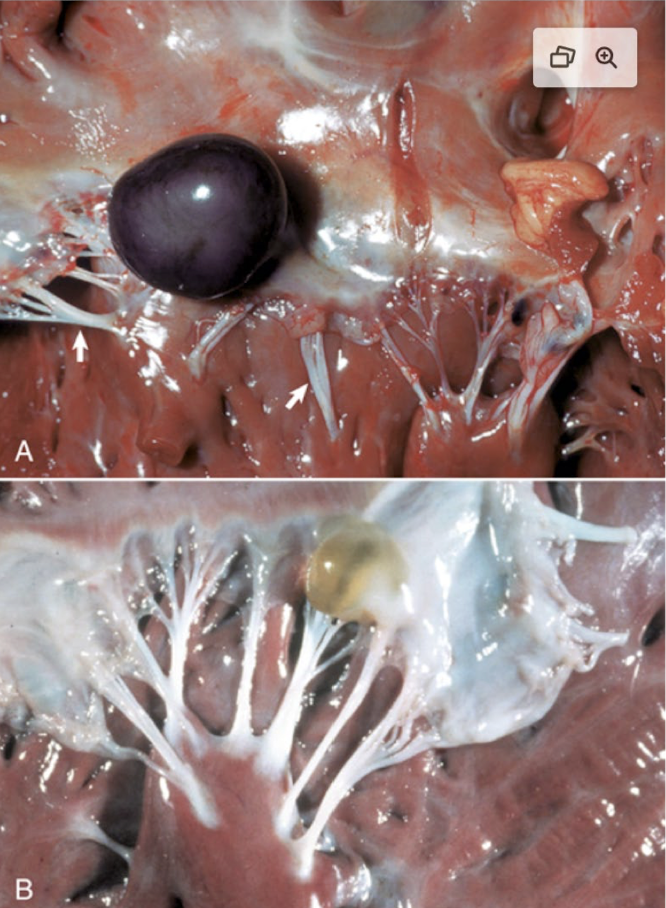
What is this showing?
hematocysts and lymphocysts
variably sized coalescing, gritty white plaques associated with the endocardium of valve leaflets
endocardial mineralization
What are causes of endocardial mineralization?
V
G
U
vitamin D
granulomatous disease
uremia
What are examples of sources of vitamin D that will lead to endocardial mineralization?
R
P
rodenticides
plants
What are examples of granulomatous disease that will lead to endocardial mineralization?
J
F
johne’s disease (cattle)
fungal disease
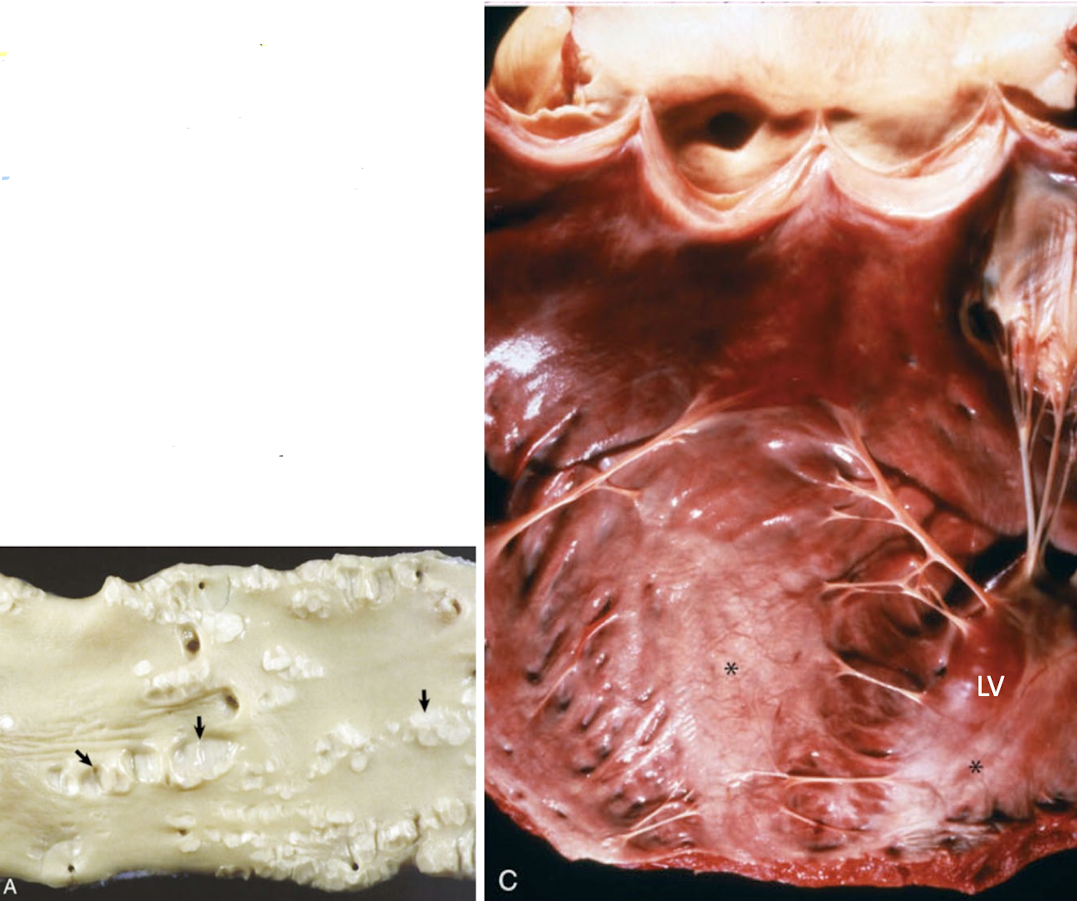
What is this showing?
endocardial mineralization
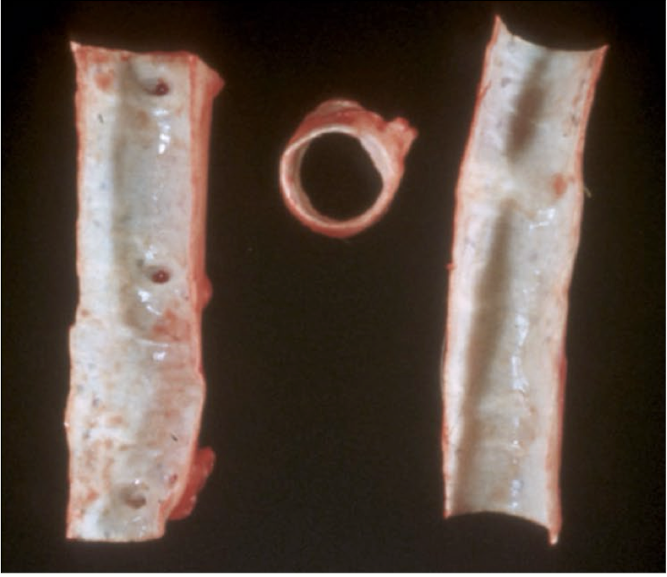
What is this showing?
endocardial mineralization
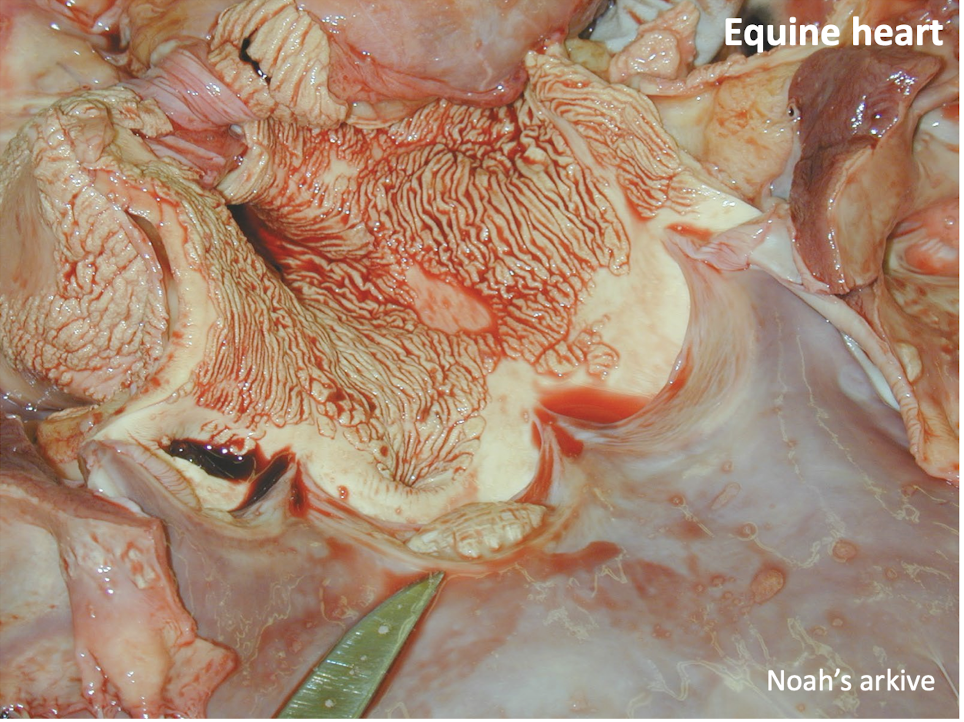
What is this showing?
endocardial mineralization due to vitamin D toxicosis
What is ulcerative endocarditis caused by?
uremia
In what species is ulcerative endocarditis typically seen in?
dogs
What part of the heart is commonly affected by ulcerative endocarditis?
left atrium » right atrium
What is the pathogenesis of ulcerative endocarditis?
injury to the endothelium causes healing by fibrosis with or without mineralization and chronically dilated atria
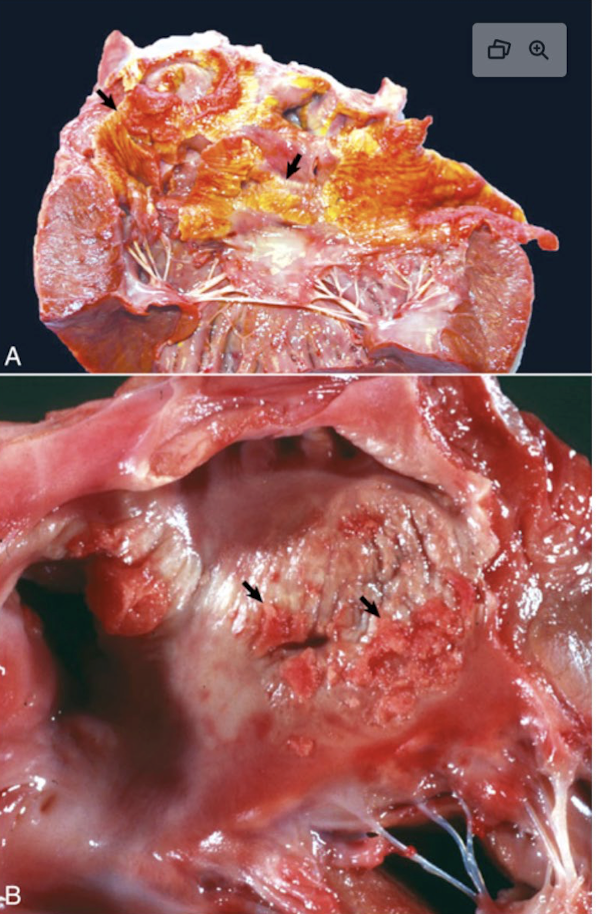
What is this showing?
ulcerative endocarditis
What is vegetative valvular endocarditis the result of? What is it uncommonly the result of?
chronic bacterial infections; parasitic or fungal infections
What are the gross lesions associated with vegetative valvular endocarditis?
large adhered, tan to mottled red, irregular and rough, friable vegetations (nodules) associated with the heart valves
What is formed in vegetative valvular endocarditis and why/how?
emboli because pieces will break off and shower other tissues
What valve is most commonly affected by vegetative valvular endocarditis?
mitral
List the order, from most to least likely, in which the heart valves are affected by vegetative valvular endocarditis.
mitral > aortic > tricuspid > pulmonary
In horses, what is vegetative valvular endocarditis most often the result of?
jugular vein thromboses from catheterization
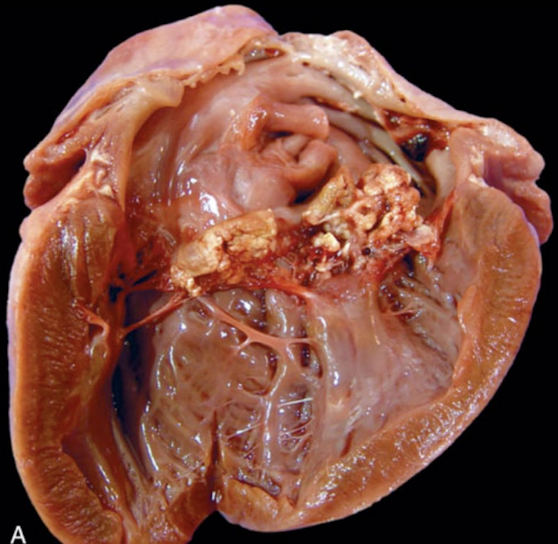
What is this showing?
vegetative valvular endocarditis
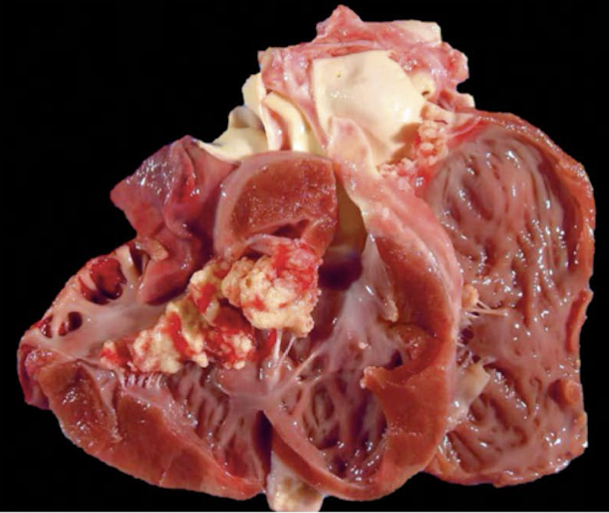
What is this showing?
vegetative valvular endocarditis
a degenerative condition seen in middle aged to older male dogs that is a smooth raised off white to coalescing nodular thickening associated with the AV valve leaflets often associated with contraction of the valve leaflet
valvular endocardiosis (myxomatous valvular degeneration)
Which valve is commonly affected in valvular endocardiosis (myxomatous valvular degeneration)?
mitral valve » mitral +tricuspid valve
What dog breed is the poster child for valvular endocardiosis (myxomatous valvular degeneration)?
cavalier king charles spanie
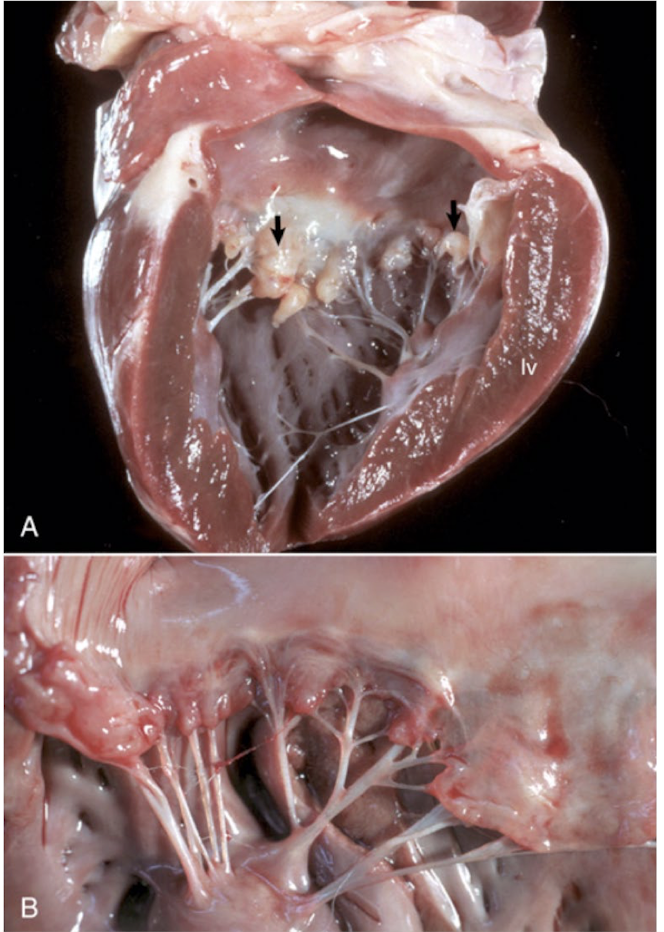
What is this showing?
valvular endocardiosis (myxomatous valvular degeneration)
What is fibrinous to fibrinosuppurative pericarditis typically a result of?
bacterial septicemia
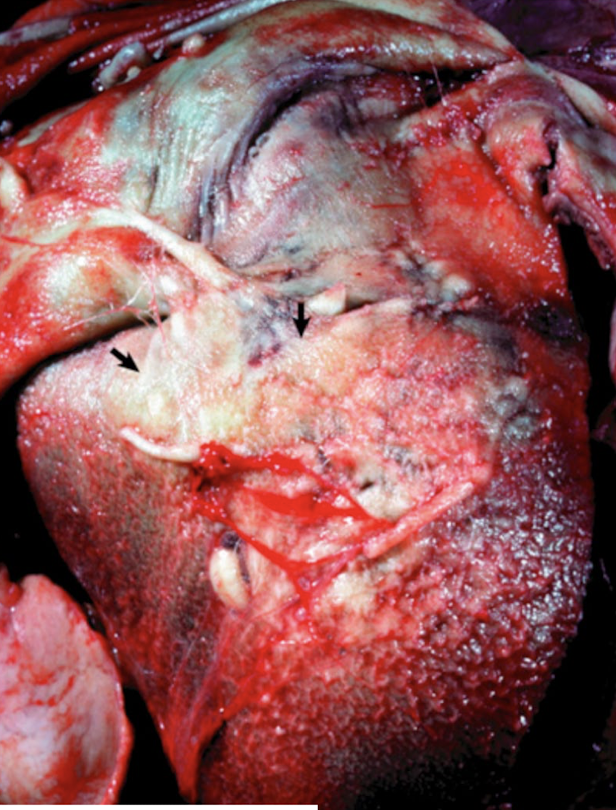
What is this showing?
fibrinous to fibrinosuppurative pericarditis
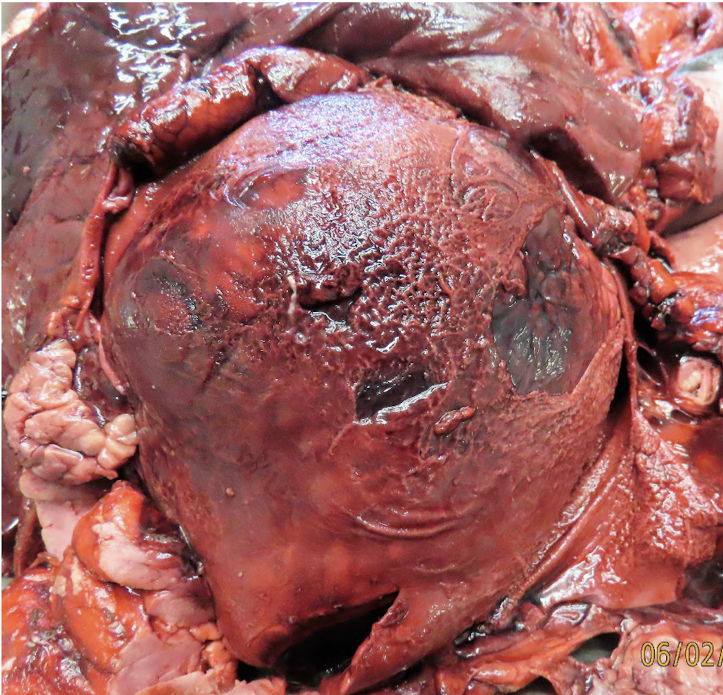
What is this showing?
clostridium chauveoi (black leg)
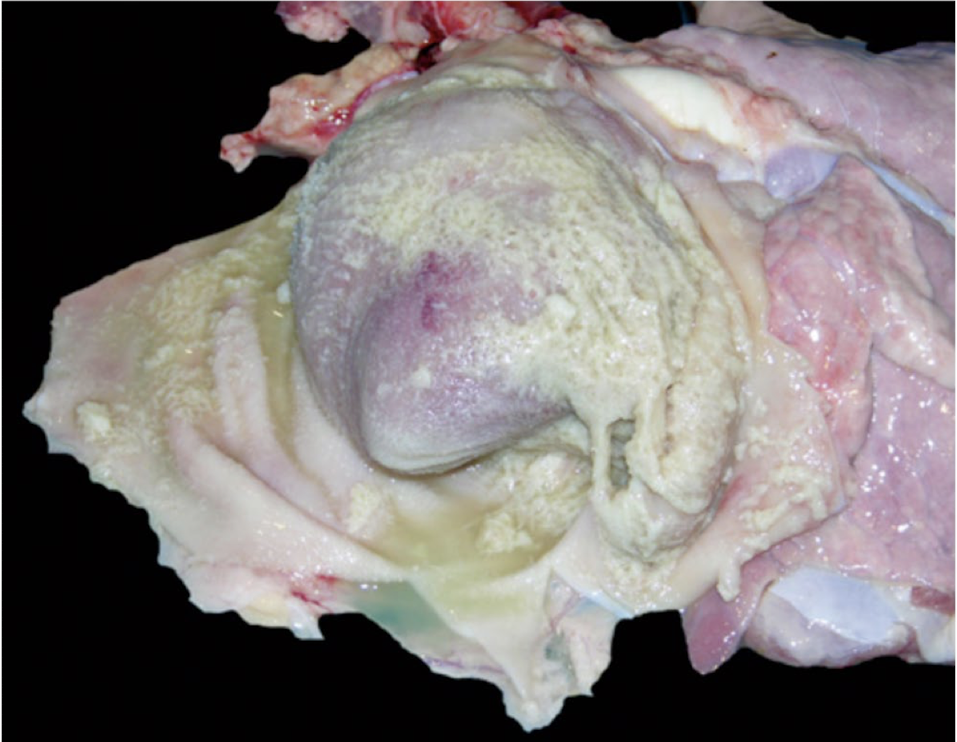
What is this showing?
fibrinous pericarditis due to Glasser’s disease
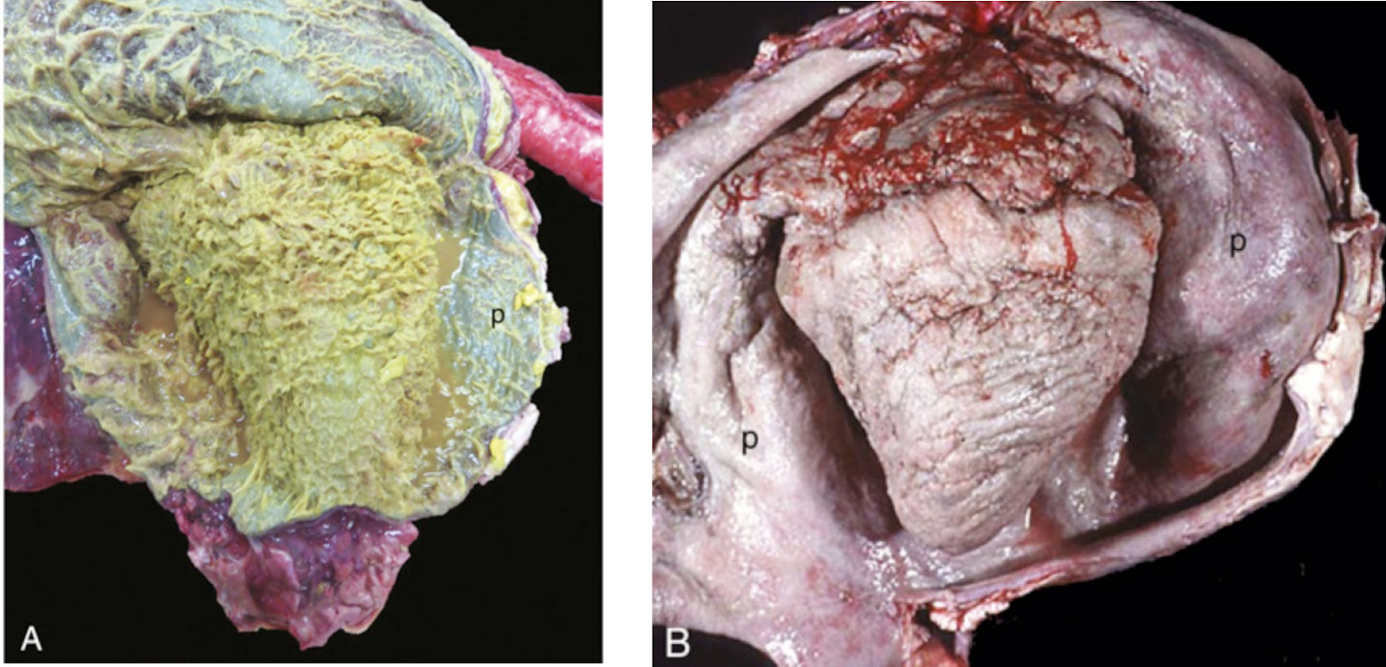
What is this showing?
traumatic reticulopericarditis aka hardware disease
deposits of uric acid that are common in avian and reptilian species
visceral gout
What are causes of visceral gout?
D
R
dehydration
renal disease
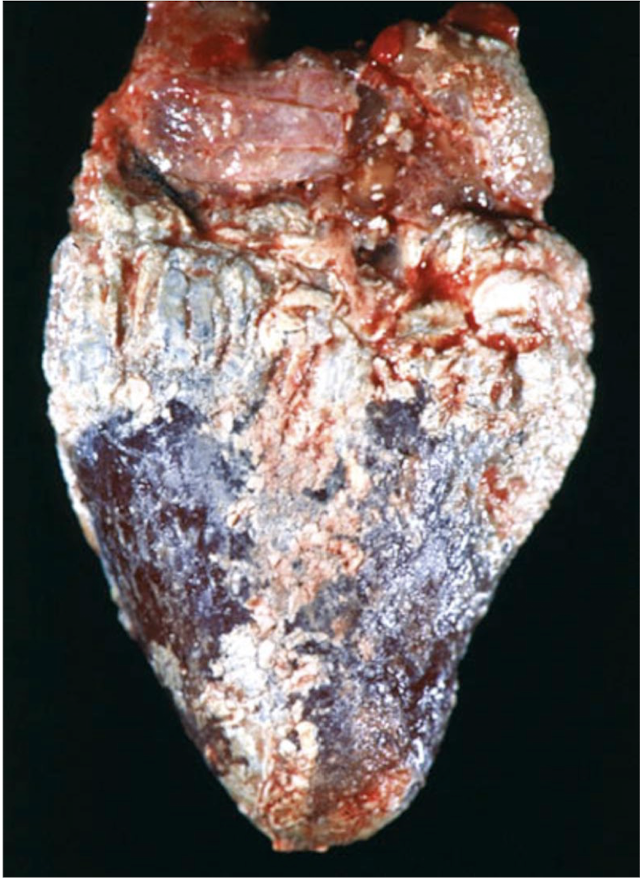
What is this showing?
visceral gout
What are some causes of epicardial mineralization?
V
V
H
S
vitamin E/selenium deficiency (extension of myocardial mineralization)
vitamin D toxicosis
hereditary (mice and hamsters)
spontaneous (rats and guinea pigs)
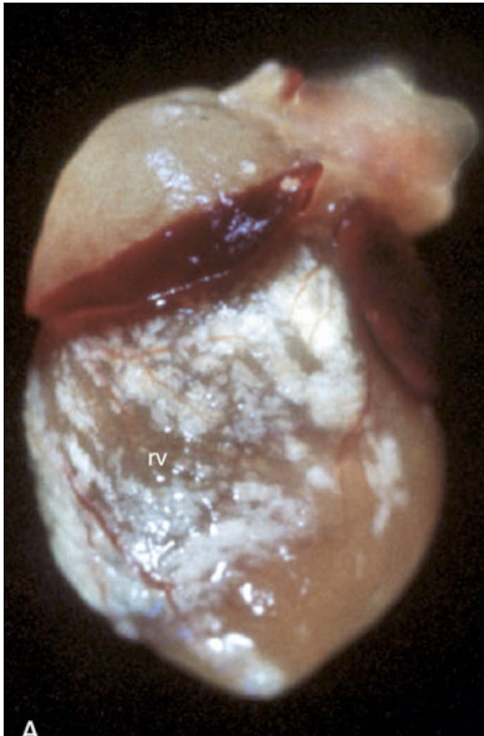
What is this showing?
epicardial mineralization
When does serous atrophy of pericardial fat/gelatinous transformation of fat occur?
in emaciated or cachexic states
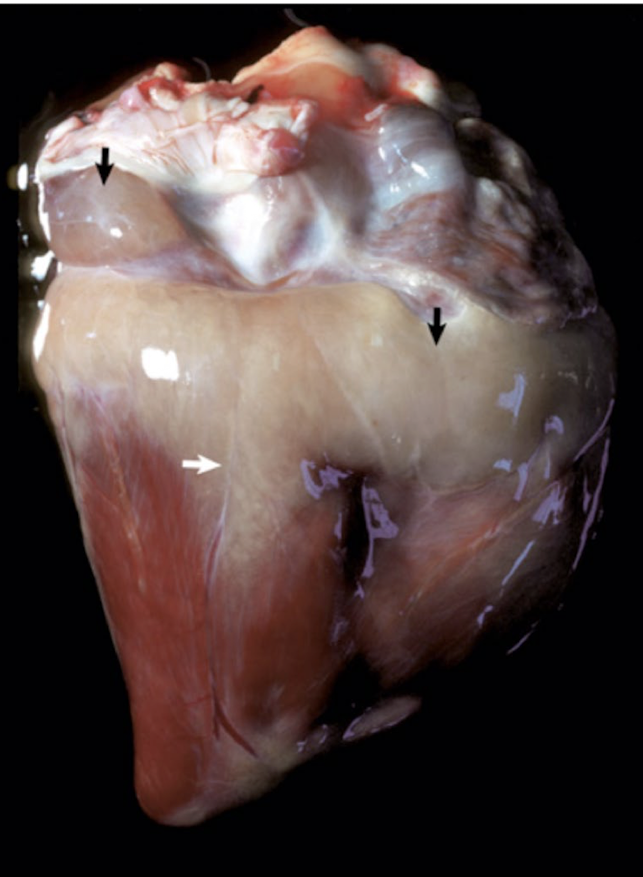
What is this showing?
serous atrophy of pericardial fat/gelatinous transformation of fat